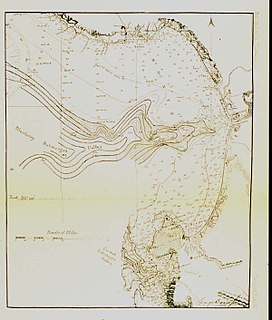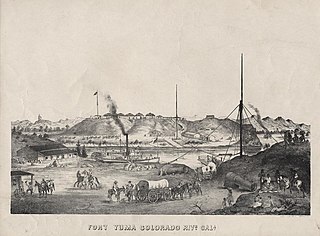
Humboldt Bay is a natural bay and a multi-basin, bar-built coastal lagoon located on the rugged North Coast of California, entirely within Humboldt County. It is the largest protected body of water on the West Coast between San Francisco Bay and Puget Sound, the second largest enclosed bay in California, and the largest port between San Francisco and Coos Bay, Oregon. The largest city adjoining the bay is Eureka, the regional center and county seat of Humboldt County, followed by the town of Arcata. These primary cities together with adjoining unincorporated communities and several small towns comprise a Humboldt Bay Area total population of nearly 80,000 people, which accounts for nearly 60% of the population of Humboldt County. In addition to being home to more than 100 plant species, 300 invertebrate species, 100 fish species, and 200 bird species, the bay and its complex system of marshes and grasses support hundreds of thousands of migrating and local shore birds. Commercially, this second largest estuary in California houses the largest oyster production operations on the West Coast, producing more than half of all oysters farmed in California.

The Pacific Mail Steamship Company was founded April 18, 1848, as a joint stock company under the laws of the State of New York by a group of New York City merchants. Incorporators included William H. Aspinwall, Edwin Bartlett, Henry Chauncey, Mr. Alsop, G.G. Howland and S.S. Howland.

Mission Bay was a bay and the estuary of Mission Creek, on the west shore of San Francisco Bay, between Steamboat Point and Point San Quentin or Potrero Point. It is now mostly filled in and is the location of the Mission Bay neighborhood of San Francisco.

Potrero Point in San Francisco, California, is the location of the earliest and most important industrial facilities in the Western United States on the eastern extension of San Francisco's Potrero Hill, a natural land mass extending into San Francisco Bay south of Mission Bay. Potrero Point, the point of Potrero Hill, was systematically blasted and cut, its serpentine cliffs removed. The work yielded two square miles of rock for fill and hundreds of acres of flat industrial land east of Illinois Street between 20th Street and Islais Creek.

Dogpatch is a neighborhood in San Francisco, California, roughly half industrial and half residential. It was initially a working-class neighborhood, but has experienced rapid gentrification since the 1990s. Now it boasts similar demographics to its neighboring Potrero Hill – an upper middle-class working professional neighborhood.

Mission Creek is a river in San Francisco, California. Once navigable from the Mission Bay inland to the vicinity of Mission Dolores, where several smaller creeks converged to form it, Mission Creek has long since been largely culverted. Its only remaining portion above-ground is the Mission Creek Channel which drains into China Basin.

The Coquille River starts in the Siskiyou National Forest and flows hundreds of miles through the Coquille Valley on its way to the Pacific Ocean. Bandon, Oregon, sits at the mouth of the Coquille River on the Pacific Ocean. Before the era of railroads and later, automobiles, the steamboats on the Coquille River were the major mode of transportation from Bandon to Coquille and Myrtle Point in southern Coos County, Oregon, United States.

Yaquina Bay, like Coos Bay, is a shallow coastal bay on the Oregon Coast in the Pacific Northwest of North America. The principal town on Yaquina Bay is Newport, Oregon. The Yaquina River flows into the bay. Until modern roads reached Newport in the late 1920s, the principal transportation method to and from Newport was by ship or boat.

California is a unique place that has not always been well understood. For hundreds of years there persisted a European misconception that California was an island and many maps were made depicting it as such. Eventually, by the 18th century, enough information about California reached the outside world to dispel that myth. As California became increasingly populated, comprehensive surveying and mapping of its territory seemingly expanded slowly. When gold was discovered in 1848 and it joined the United States as the thirty first state in 1851 interest in plotting California's landscapes boomed.
The California Steam Navigation Company was formed in 1854 to consolidate competing steamship companies in the San Francisco Bay Area and on the Sacramento and San Joaquin Rivers. It was successful in this effort and established a profitable near-monopoly which it maintained by buying out or bankrupting new competitors. In response to the Fraser Canyon gold rush and economic growth in the Pacific Northwest, the company expanded to ocean routes from San Francisco north to British Columbia. Similarly, as California's economy grew, the company offered service from San Francisco south to San Pedro and San Diego. It exited these markets in 1867 when competition drove prices to unprofitable levels. While the California Steam Navigation Company was successful throughout its life in suppressing steamboat competition on its core Bay Area and river routes, it could not control the rise of railroads. These new competitors reduced the company's revenue and profit. Finally, in 1871, the company's assets were purchased by the California Pacific Railroad, and the corporation was dissolved.

Steamboats on the Colorado River operated from the river mouth at the Colorado River Delta on the Gulf of California in Mexico, up to the Virgin River on the Lower Colorado River Valley in the Southwestern United States from 1852 until 1909, when the construction of the Laguna Dam was completed. The shallow draft paddle steamers were found to be the most economical way to ship goods between the Pacific Ocean ports and settlements and mines along the lower river, putting in at landings in Sonora state, Baja California Territory, California state, Arizona Territory, New Mexico Territory, and Nevada state. They remained the primary means of transportation of freight until the advent of the more economical railroads began cutting away at their business from 1878 when the first line entered Arizona Territory.

John Gunder North was a Norwegian born, ship builder in San Francisco. During his career, he built 273 hulls of all kinds with 53 bay and river steamers, including the famed paddle steamers Chrysopolis, Yosemite and Capital.
Domingo Marcucci, was a Venezuelan born 49er, shipbuilder and shipowner in San Francisco, California. He owned or captained some of the many steamships, steamboats, ferries, and sailing ships he built at San Francisco and elsewhere on the Pacific coast.
Steamboats operated in California on San Francisco Bay and the Sacramento–San Joaquin River Delta, and Sacramento River as early as November 1847, when the Sitka built by William A. Leidesdorff briefly ran on San Francisco Bay and up the Sacramento River to New Helvetia. After the first discovery of gold in California the first shipping on the bays and up the rivers were by ocean going craft that were able to sail close to the wind and of a shallow enough draft to be able to sail up the river channels and sloughs, although they were often abandoned by their crews upon reaching their destination. Regular service up the rivers, was provided primarily by schooners and launches to Sacramento and Stockton, that would take a week or more to make the trip.
Rancho Potrero de San Francisco or Rancho Potrero Nuevo was approximately 1,000-acre (4.0 km2) Mexican land grant in the present day Potrero Hill neighborhood of San Francisco, California.

Yerba Buena Cove was a cove on San Francisco Bay where the Mexican pueblo of Yerba Buena was located. It lay between Clarks Point to the north and Rincon Point to the south. The beach of the cove was set back as far as what is now Montgomery Street between Clay and Washington Streets. Between the beginning of the California Gold Rush and 1860 the cove was filled in, and the downtown of the city of San Francisco built over it. A number of ships were sunk in the cove, some intentionally scuttled to allow the owners to claim the land around the sunken ship. Wrecks known to remain buried include the Apollo, the Niantic, and the Rome, the latter of which was discovered in 1994 during construction of the Muni Metro Turnback Tunnel.
Elizabeth Owens was a schooner, built in 1857, at the new San Francisco shipyard of shipbuilder Henry Owens at Steamboat Point where 4th Street met Mission Bay. She was the first ship built in the yard and was named for his wife. Under Captain Albert Bogard, her first voyage was to obtain green turtle and was the first ship to trade at Santa Catalina Island.
Alfred Henry Wilcox (1823-1883), sea captain, later Colorado River pioneer and steamboat and steamship entrepreneur, partner in the George A. Johnson & Company and of the Colorado Steam Navigation Company, banker and director of the California & Mexican Steam Ship Line.
Captain Sutter, sometimes mistakenly called the Sutter, or the John A. Sutter, was a stern-wheel steamboat, built in Philadelphia, brought around Cape Horn, to California, the first to run from San Francisco to Stockton, from late November 1849.












